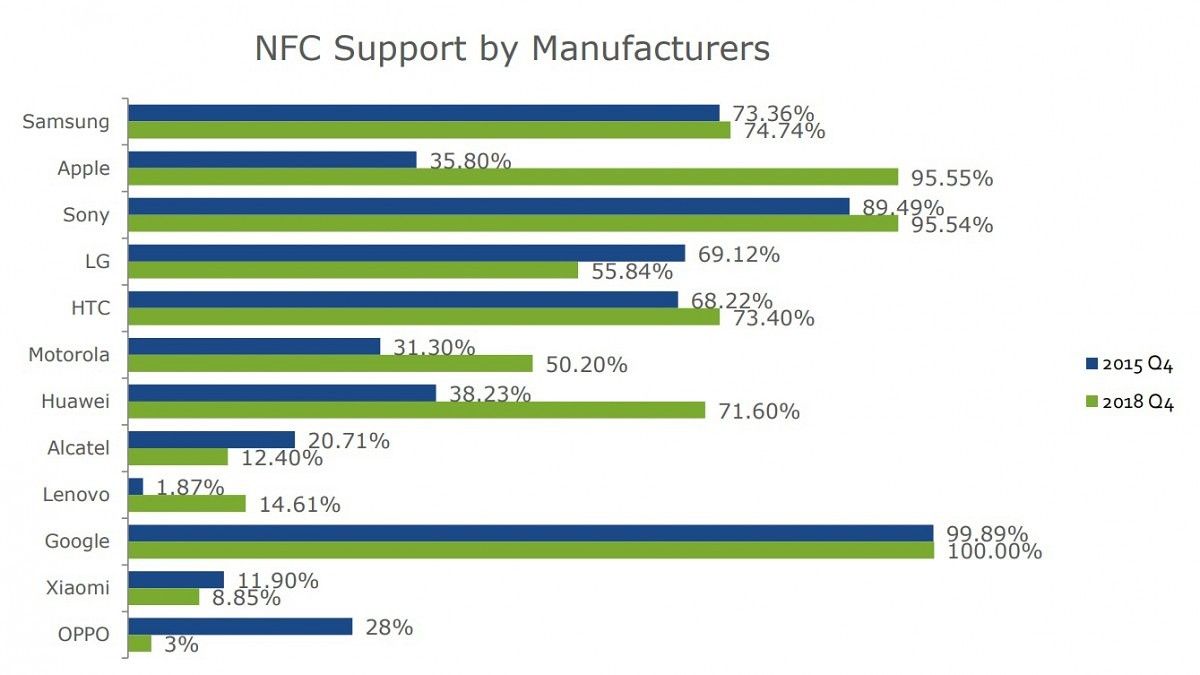NFC or Near Field Communication is an amazingly useful technology that you'll find on many mid-range and high-end smartphones. Using NFC, you can tap on other accessories like headphones to connect with them over Bluetooth, make payments at PoS machines, share files via Android Beam (RIP), or even read the data stored programmable NFC tags with your smartphone.
There are clearly many benefits that NFC offers, but it has remained alien to most of the Asian population. So much so that manufacturers with a strong foothold in the continent are producing fewer devices with NFC than earlier.
The recent edition of Mobile Overview Report by ScientiaMobile illustrates that four of the biggest smartphone manufacturers in the world have been lopping off NFC from their devices. These brands include Xiaomi, OPPO, LG, and Alcatel. Based on the available data, LG now offers NFC on slightly more than half of its devices, Xiaomi on only 9% of the models, Alcatel on 12%, and OPPO on merely 3% of its smartphones.
The move is surprising since most other manufacturers in the world have used the technology increasingly since 2015. Brands like Apple, Huawei, Motorola, and Lenovo have majorly increased support for NFC on their smartphones, while Samsung and Sony have shown a marginal increase.
One reasonable explanation for this reduction in support for NFC is the average value of smartphones produced by the brands. Xiaomi, Alcatel, and OPPO offer smartphones mostly for the entry-level and mid-range segments in parts of East Asia, especially two of the world's biggest markets for smartphones - China and India. So it makes sense to remove NFC even if it only cuts the cost of the device by a few dollars.
Secondly, in both China and India, scannable QR codes - not NFC - are the preferred modes of initiating payments. Services like WeChat Pay and Alipay (China), and Paytm and UPI (India) are much more common than Apple Pay or Google Pay. Google even released a custom version of Google Pay - previously known as "Tez" - in India which uses audio QR or simply ultrasonic frequencies to establish a connection between the payee and the payer.
In the case of LG, however, a more appropriate explanation is the reduced number of models produced by the phone maker since 2015. LG's smartphone division has failed to produce a profit in the last two years, and its losses amounted to 80.7 billion Korean won ($72.5 million) in the last quarter of 2018. Evidently, this trend does not infer a global shift but simply a difference between the preferences of consumers in the eastern and the westerns hemispheres.


